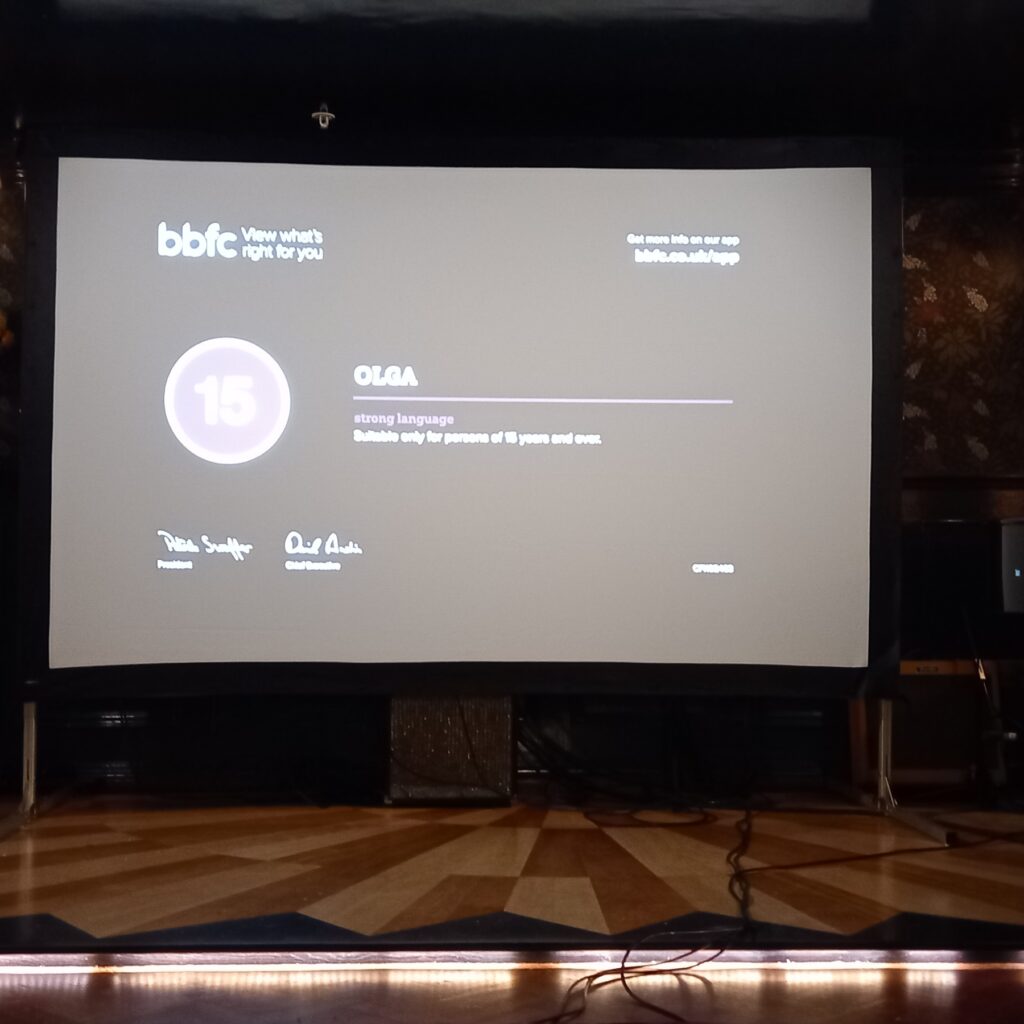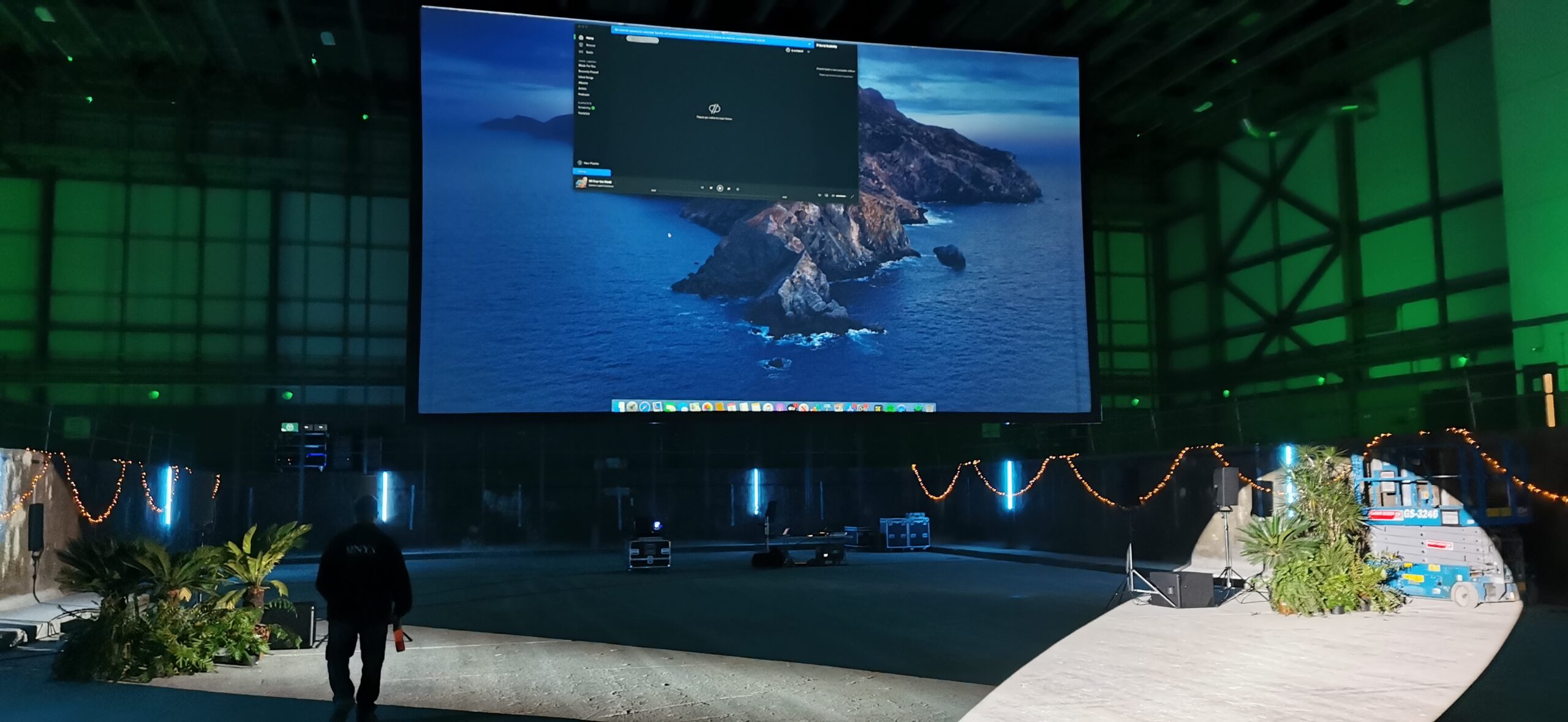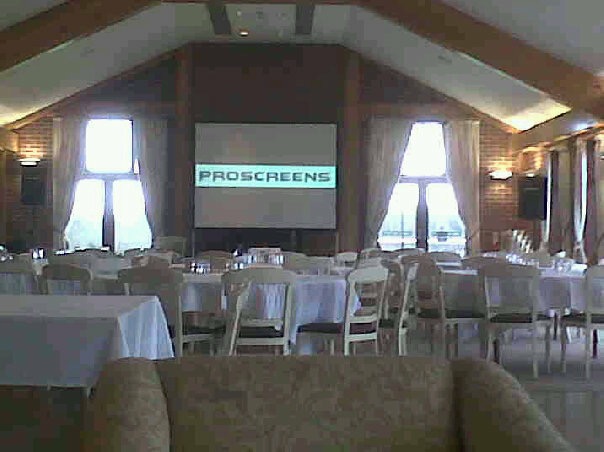cinema screens are made in the UK. Cinema screens are large surfaces that display moving images for public viewing. They have evolved from simple white sheets to complex and sophisticated systems that use different materials and technologies to create high-quality and immersive visual experiences.
The history of cinema screens in the UK can be traced back to the late 19th century, when the first film exhibitors used portable projectors and screens to show films to the public. These screens were usually made of canvas, linen, or cotton, and were stretched over wooden frames or hung from walls or ceilings. They were often painted white or coated with lime or zinc oxide to increase their reflectivity and brightness.
In the early 20th century, cinema screens became more standardized and durable, as film technology improved and new genres emerged. Some of the innovations and trends that influenced cinema screens were:
- The introduction of carbon arc lamps, which increased the brightness and quality of projection.
- The development of optical soundtracks, which synchronized sound and image on the film strip.
- The adoption of widescreen formats, such as CinemaScope and Cinerama, which created a more immersive and spectacular viewing experience.
- The emergence of documentary and ethnographic films, which captured the diversity and reality of the world.
Some of the materials and techniques that were used to make cinema screens in this period were:
- Silver lenticular screens, which consisted of tiny glass beads embedded in a silver-painted surface, which reflected light back to the source and enhanced the contrast and sharpness of the image.
- Perforated screens, which had small holes or slits on the surface, which allowed sound to pass through from speakers behind the screen.
- Curved screens, which had a concave or convex shape, which increased the field of view and reduced distortion on the edges of the image.
In the mid-20th century, cinema screens faced some challenges and changes, as film distribution became more centralized and standardized, and as television and home video became more accessible and affordable. Some of the factors that affected cinema screens were:
- The rise of film exchanges, which controlled the supply and demand of films in different regions and markets.
- The establishment of digital cinema initiatives, which defined the technical requirements and specifications for digital cinema systems.
- The competition from other media forms, such as radio, television, video games, and online streaming.
- The social and political changes, such as wars, revolutions, migrations, and globalization.
Some of the materials and techniques that were used to make cinema screens in this period were:
- Matt white screens, which had a smooth and uniform surface, which reduced glare and reflection and improved colour accuracy and consistency.
- Gain screens, which had a reflective coating or layer on the surface, which increased the brightness and intensity of the image.
- 3D screens, which had a polarized or metallic surface, which enabled the projection of stereoscopic images that created an illusion of depth.
In recent years, cinema screens have advanced further in terms of performance and innovation. Some of the current trends are:
- The use of laser or LED light sources, which offer higher brightness, lower power consumption, longer lifespan, and wider colour gamut than traditional lamps.
- The use of high dynamic range (HDR) technology, which enhances the contrast and detail of dark and bright areas on the screen.
- The use of high frame rate (HFR) technology, which increases the smoothness and realism of motion on the screen.
- The use of immersive audio formats, such as Dolby Atmos and DTS:X, which create a three-dimensional sound field around the audience.
Some of the materials and techniques that are used to make cinema screens in this period are:
- Acoustically transparent screens (ATS), which have micro-perforations or woven fabrics on the surface, which allow sound to pass through from speakers behind the screen without compromising image quality.
- Active 3D screens (A3D), which have a switchable polarizing filter on the surface, which alternates between left-eye and right-eye images at high speed without requiring special glasses for viewing.
- Holographic screens (HS), which have a thin film or foil on the surface, which diffracts light into multiple angles and creates a holographic image that appears to float in mid-air.
As you can see, cinema screens have come a long way since their inception. They have transformed from simple white sheets to complex and sophisticated systems that use different materials and technologies to create high-quality and immersive visual experiences. I hope you enjoyed learning about their history in the UK. If you have any questions or feedback, please let me know. 😊https://en.wikipedia.org/wiki/Cinema_of_the_United_Kingdom.
(2) A very short history of cinema – National Science and Media Museum. https://www.scienceandmediamuseum.org.uk/objects-and-stories/very-short-history-of-cinema.
(3) Merlin Cinemas – Wikipedia. https://en.wikipedia.org/wiki/Merlin_Cinemas.
(4) How Do Cinema Screens Really Work? | Cheap TVs Blog. https://www.cheaptvs.co.uk/blog/cinema-screens-work/.





